Shells
December 3, 2007
I have separated all shells into bags depending on trench and stratigraphic unit. I arbitrarily labeled each bag as containing shells that were large, fairly large, small, or too small. I counted the number of shells in each trench and SU and then massed each bag in grams. I have assembled the following excel spreadsheet. I also have determined visually the difference between oysters and clams and photographed examples of each of these. My next step is to count the numbers of oysters vs. clams. When I have collected all necessary data, I will create bar graphs and post them here.
Oyster Shell D1 SU3 Obverse
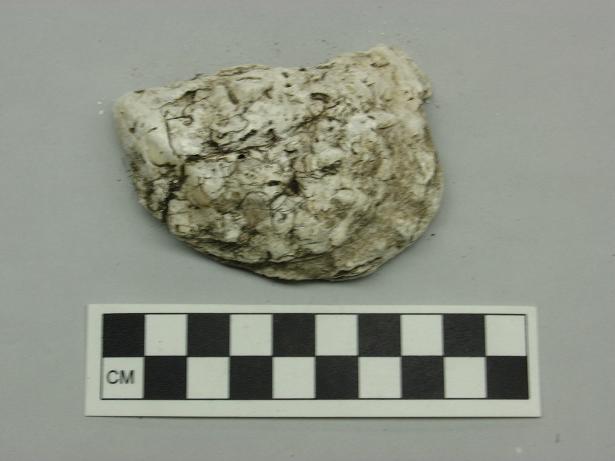
Oyster Shell D1 SU3 Reverse
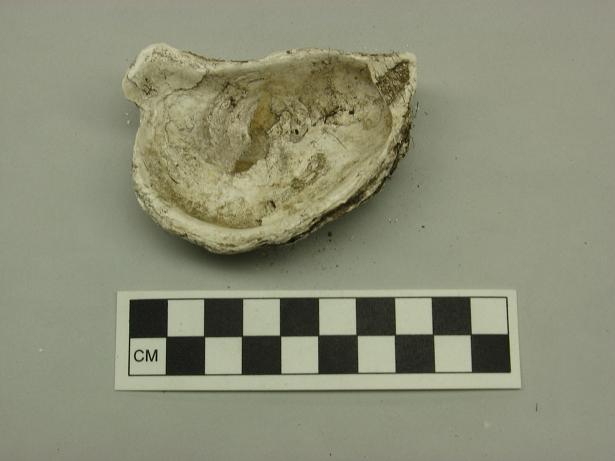
Clam Shell D2 SU8 Obverse
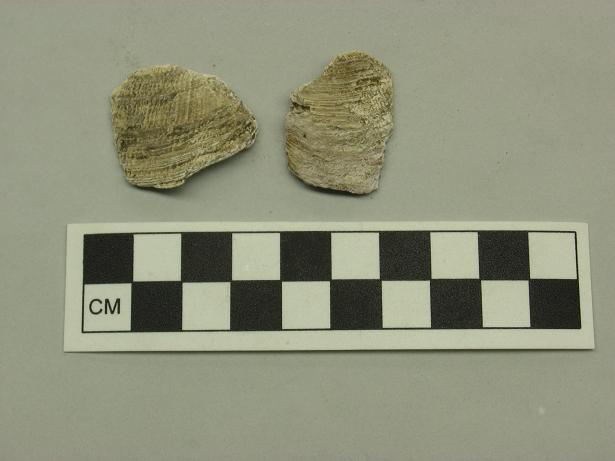
Clam Shell D2 SU8 Reverse
Bones
December 6, 2007
I went to the RISD Nature Lab on Tuesday to look at its collection of animal bones. Although the collection was much more disorganized than I had expected (none of the bones were properly labeled), the librarians were able to provide me with a book that helped me attempt to identify the remains. I then met with Lisa Anderson today who looked at the most complete bones. She confirmed some of my hypotheses and corrected some my others. First, the fact that the four bone fragments from D1 SU4 pictured below belong to the same humerus. Unfortunately, some of my identifications were wrong, but fortunately, Lisa Anderson was able to correct me. I want to stress, that she did her best to identify these bones, but she intentionally failed to be specific because the fragments discovered this season provide extremely inconclusive evidence. See the pictures below for more information.
December 3, 2007
As with the shells, I have separated all animal bones into bags depending on trench and SU. I counted all bone fragments and determined which fragments are likely to be parts of the same bone. I massed each bone or collection of bone fragments and assembled the following spreadsheet. I commented on the size, shape, and other characteristics of the bones. I photographed all bones because this season as yielded far fewer than the 2006 season. The bones marked in BOLD, however will be the focus of this project as they are the most complete and most easily identifiable. My next step is to begin this identification process by going to the RISD Museum of National History, which is coincidentally across the street from the First Baptist Church. Over the next few days, I also promise to resize my drawings, so that they match the scale of my photographs.
Epiphysis of a Long Bone of a Small Mammal (C1 SU4)
Obverse
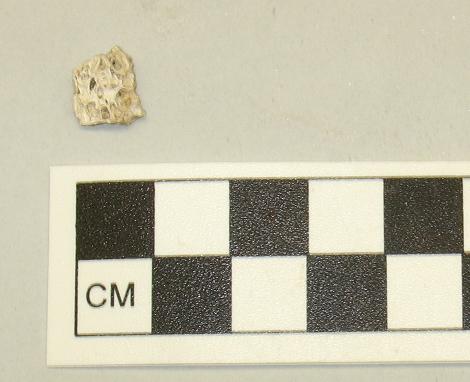
Reverse
This fragment will not be a focus of my project. Lisa Anderson suggested that this fragment was part of the epiphysis (rounded, spongy end) of a long bone of a small mammal, based only on the picture.
Ambiguous Bone Fragment (D1 SU4)
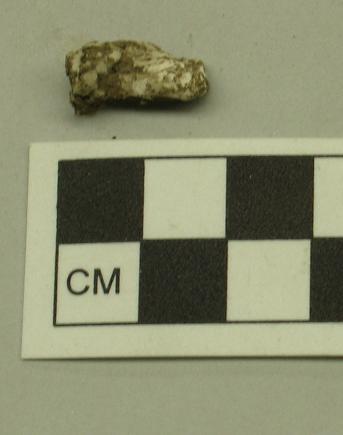
This fragment is strange and not conclusively identifiable.
Fragments of the Epiphysis of a Long Bone of a Medium-Sized Mammal (D1 SU4)
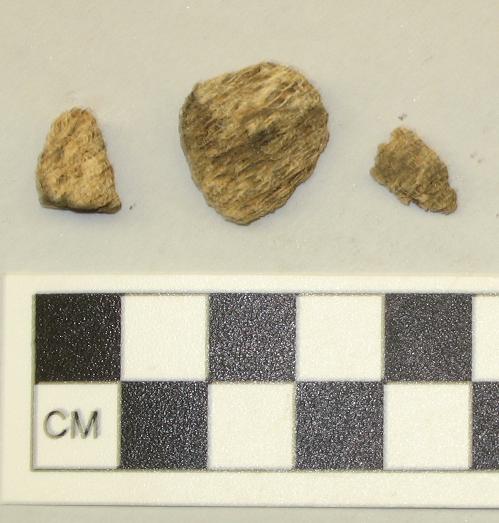
Again, these fragments will not be a focus of my project, but Lisa Anderson gave the above identification based on the picture.
Distal Humerus from a Medium-Sized Animal (D1 SU4)
Obverse
Reverse
Lisa Anderson, our resident archaeozoologist, identified the following bone as likely coming from a distal humerus of a dog, as of October 15, 2007. On December 6, 2007, she examined the bone again and decided that it is definitely a long bone, possibly a femur but more likely a humerus, of a medium-sized mammal, possibly a dog. The four fragments in the picture above can be pieced together, which I will do shortly and post a new picture and drawing. Of interest is the fact that the most number of bone fragments came from D1 SU4. Because none of these fragments is identifiable to any species, I will not calculate a MNI, but all fragments may, although it cannot be conclusively proven, come from the same animal.
Fragment of a Long Bone from a Medium-Sized Mammal (D1 SU5)
Obverse
Reverse
Fragment of a Long Bone from a Domestic Bird (D1 SU9)
Obverse
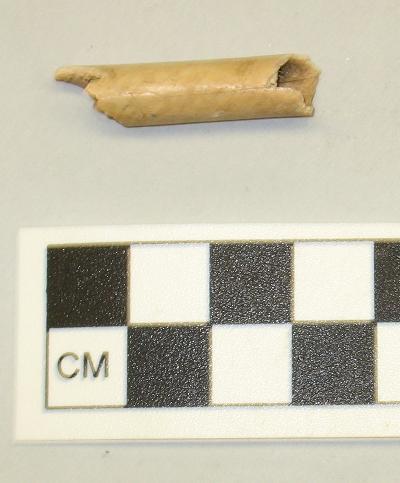
Reverse
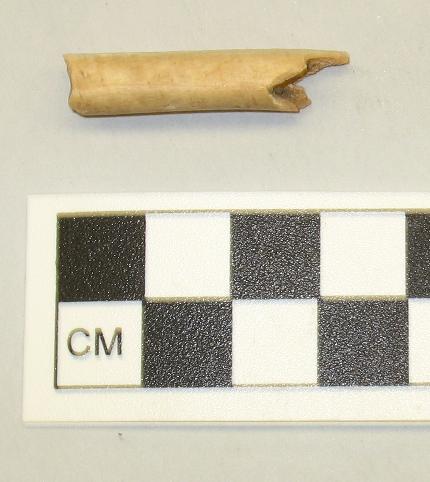
This fragment definitely belongs to a bird. It is too round and straight to be part of a rib. It probably belongs to a chicken, or another domestic bird.
End of a Long Bone of a Small Mammal (D2 SU5)
Obverse
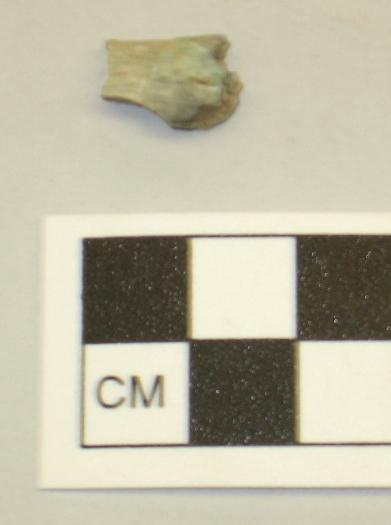
Reverse
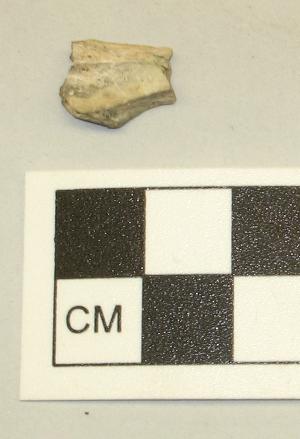
Fragment of a Thoracic Vertebra of a Medium to Large-Sized Mammal (D2 SU7)
Obverse
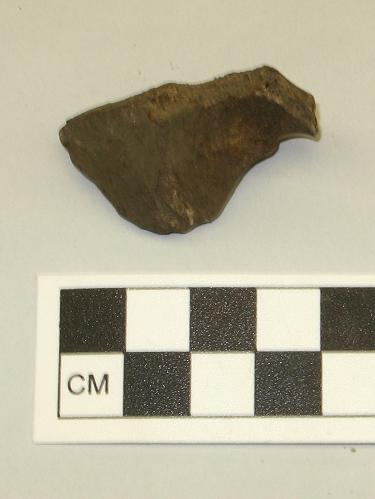
Reverse
I originally thought that this fragment would be a piece of a pelvis or scapula. When I went to the RISD Nature Lab, I identified the fragment as part of the scapula of a deer, or similarly-sized mammal. Lisa Anderson identified the fragment as part of the vertebra of a medium-sized mammal, possibly a sheep-goat.
End of a Long Bone of a Small Mammal (D2 SU8)
Obverse
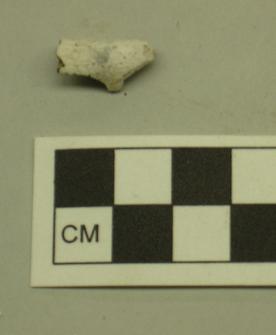
Reverse
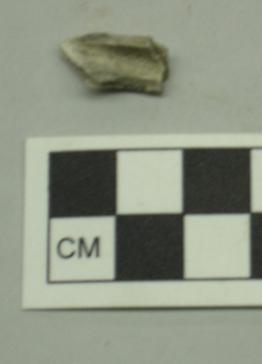
Other
December 3, 2007
The only other faunal remain is a small fragment of a turtle shell. As with the shells and bones, I massed the find. Because the turtle shell has already been identified, I will focus on the bones and shells. I plan, however, to research the colonial diet and find where turtles fit in.
Obverse
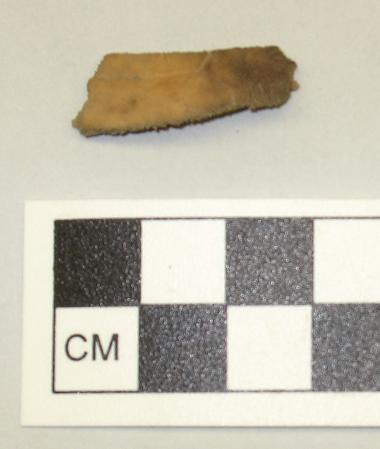
Reverse
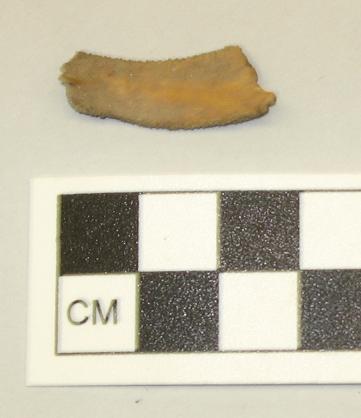
If anyone has further questions or thinks they can identify any of these bones, send an e-mail to [email protected]
 Faunal Remains.ppt
Faunal Remains.ppt